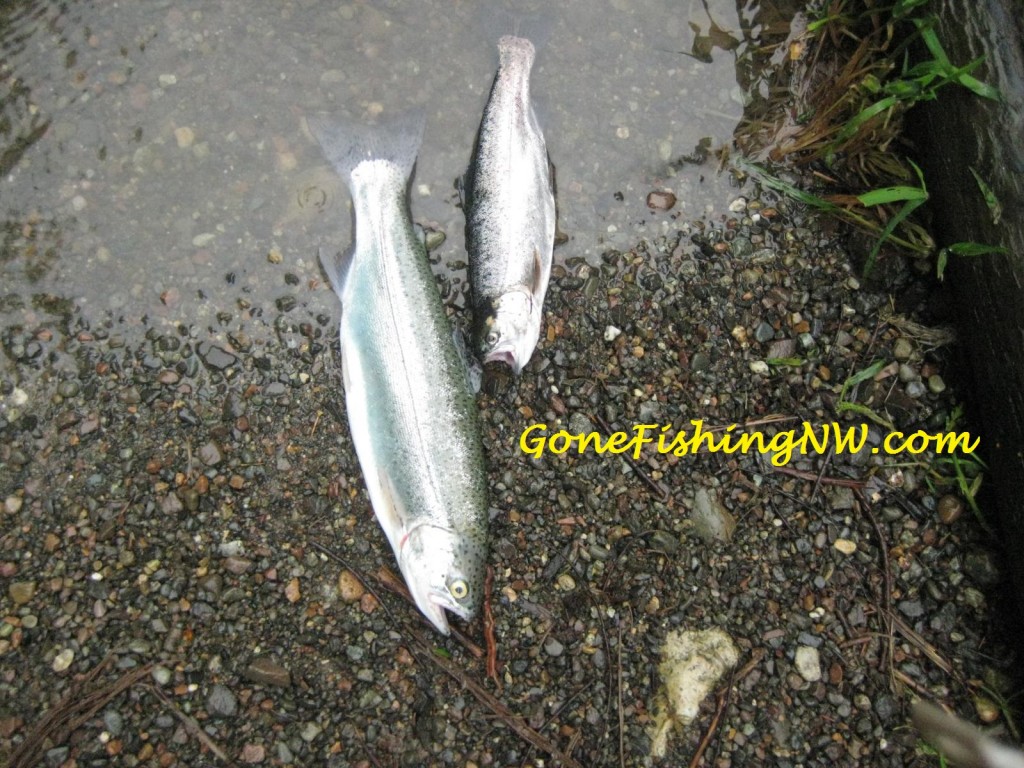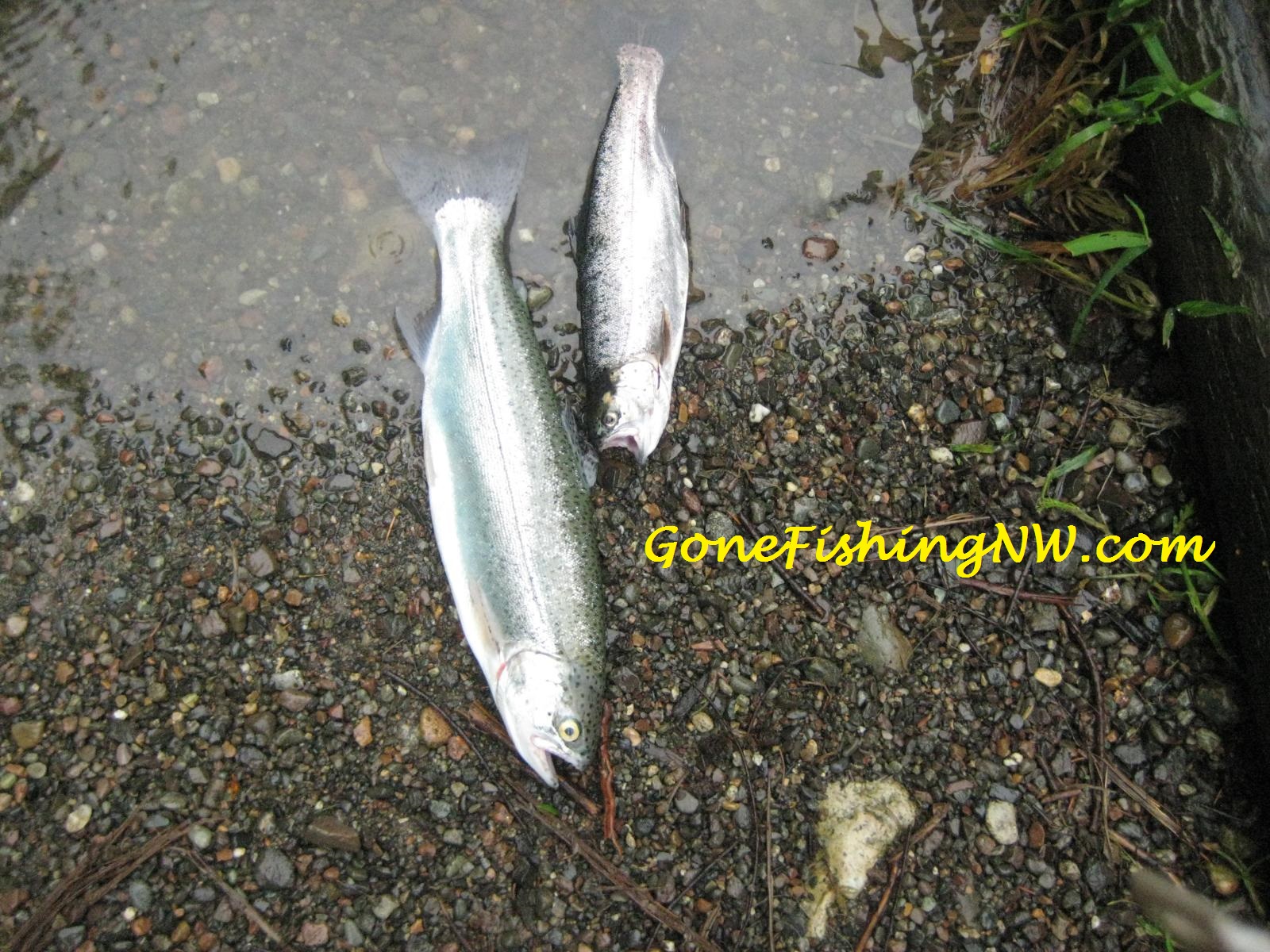That that we understand the trout’s needs, traits, the structure of stillwater and how stillwater changes through the seasons we are ready to pull it all together and go through specific fishing scenarios.
In this article we will cover spring fishing – where the fish are and what lures they will best respond to.
As mentioned in previous articles each lake is a bit different, especially with how much it is affected by the changing seasons. This article will assume a typical lowland western Washington lake. For other areas use this as a template and adjust for local conditions.

Early Spring
Spring starts with the vernal equinox, which is usually in the second half of March. The water has warmed up since the middle of winter, but is still on the chilly side for the trout. Usually the water this time of year is in the mid to high 40s.
The trout are starting to “wake up” but are still sluggish. During this time of year the trout will be found near the surface. Points, bays and weed lines are great places to target.
Keep your eyes open for signs of fish – jumping or rising trout. Fish in and around locations you are seeing rises.
Due to the cold temperature the best fishing days will be warmer ones, especially if there are several warm days in a row. While early morning can be good, most days waiting for the day to warm up a bit is a good strategy to maximize catching.
Because the fish are sluggish you need to have a slow presentation, so use lures that work well as slow speeds. If you are trolling then by slow I mean 0.8-1.0 MPH.
For lures we want to use ones that will stimulate sluggish trout into action. These will tend to be larger and brighter. UV colors and bright spinning blades are good ideas.
Some of my favorites this time of year are:
- Fluorescent Red Flatfish (F5 or F6 sizes)
- Green Caddis Rooster Tail Spinner (1/16 oz)
- Watermellon Needlefish (size 2)
- Wedding Ring in just about any fluorescent color – perhaps tipped with a small piece of worm.
Many lakes get planted this time of year, and that information should influence which lakes to fish.
For lakes with wild trout the fish may be in the connected rivers and streams spawning this time of year. If this is the case for your lake, then I suggest fishing elsewhere.
Mid Spring
By late April/early May the water temperature will reach that magic 54 degrees – and the fish will be extremely active. There should be lots of rising fish, especially during periods of active feeding.
Because the water deeper is still cold, they will tend to be close to the surface. Because of this fishing at low light times – like sunrise/sunset – when they are actively feeding will be the recipe for best success. If the day is overcast then the bite will last a bit longer than usual.
The fish will be close to where the food is – points, bays, shoals and weed lines.
You also need to maintain some distance from the boat, since fish near the surface will get spooked. 50 to 100 feet is typical.
Because the fish are more willing to chase down potential food, we can have a faster presentation. If trolling 1.0-1.2MPH tends to be best.
For lures the ones from early spring should continue to work decently well. However you might have more success using ones a size smaller, and perhaps duller colors.
My favorite mid spring lures include:
- Frog Flatfish (in sizes F4/F5)
- Rainbow Trout Hot Shot (in size 50 or 60)
- A stillwater fly – especially behind an action disk
One exception, however is if the feeder streams contain salmon smolt which are starting to make their migration. In that case using lures which look like those smolt – such as a silver Rapala (I like the size 5 floating) can work great.
Late Spring
This period is much like mid spring, but the water will continue to warm up to the low 60s.
Now that there is warmer water a bit deeper, the fish will be a few feet under the surface where the feel safer. We may even see the thermocline start to form a few feet down in the water column.
Surface activity will decrease, especially when the trout aren’t actively feeding. On sunny days they will likely go down a foot or 2 deeper.
The trout will tend to be at the same spots as in mid spring, but will start to stay more away from the shallows during the daytime.
While you can catch trout at any time of day, for maximum success it is important to fish around sunrise/sunset when the fish tend to actively feed. Overcast days can also be great times.
For lures small and dark continue to work well, and I stick with the mid spring lineup.
Conclusion
Using the foundation knowledge about trout, lakes and seasons we now know where to find fish in the spring, and how best to target them.
In the next article we will cover what to do in summer. For more information about trout fishing, check out the Trout page.








Comments are closed.